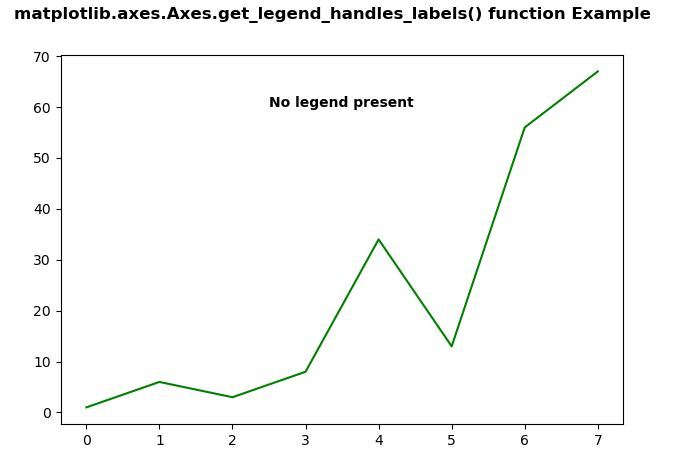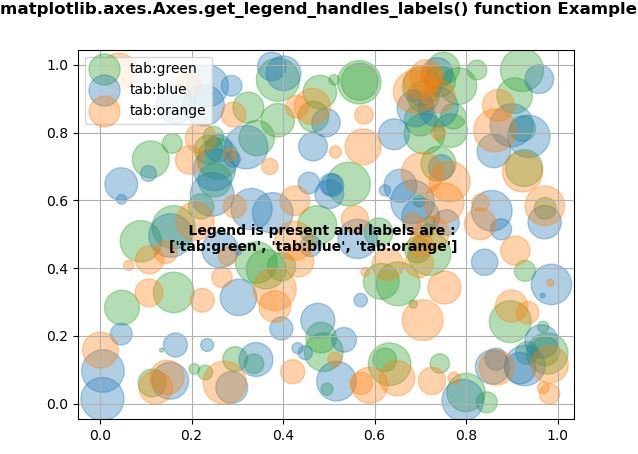Matplotlib.axes.Axes.get_legend_handles_labels () в Python
Matplotlib - это библиотека на Python, которая является численно-математическим расширением библиотеки NumPy. Класс Axes содержит большинство элементов фигуры: Axis, Tick, Line2D, Text, Polygon и т. Д. И задает систему координат. А экземпляры Axes поддерживают обратные вызовы через атрибут callbacks.
Функция matplotlib.axes.Axes.get_legend_handles_labels ()
Функция Axes.get_legend_handles_labels () в модуле осей библиотеки matplotlib используется для возврата дескрипторов и меток для легенды.
Syntax: Axes.get_legend_handles_labels(self)
Parameters: This method does not accepts any parameters.
Return: This function return the handles and labels for legend.
Примеры ниже иллюстрируют функцию matplotlib.axes.Axes.get_legend_handles_labels () в matplotlib.axes:
Example 1:
# Implementation of matplotlib function import matplotlib.pyplot as pltimport numpy as np fig, ax = plt.subplots()ax.plot([1, 6, 3, 8, 34, 13, 56, 67], color ="green") h, l = ax.get_legend_handles_labels()# print(h, l)text ="Legend is present"if h ==[]: text ="No legend present"else: text+="and labels are : "+str(l) ax.text(2.5, 60, text, fontweight ="bold")fig.suptitle("matplotlib.axes.Axes.get_legend_handles_labels() function Example
", fontweight ="bold")fig.canvas.draw()plt.show() |
Выход:
Example 2:
# Implementation of matplotlib functionimport numpy as npnp.random.seed(19680801)import matplotlib.pyplot as plt fig, ax = plt.subplots()for color in [ "tab:green", "tab:blue", "tab:orange"]: n = 70 x, y = np.random.rand(2, n) scale = 1000.0 * np.random.rand(n) ax.scatter(x, y, c = color, s = scale, label = color, alpha = 0.35) ax.legend()ax.grid(True) h, l = ax.get_legend_handles_labels()print(h, l)text =" Legend is present"if h ==[]: text ="No legend present"else: text+=" and labels are :
"+str(l) ax.text(0.15, 0.45, text, fontweight ="bold")fig.suptitle("matplotlib.axes.Axes.get_legend_handles_labels() function Example
", fontweight ="bold")fig.canvas.draw()plt.show() |
Выход:
Внимание компьютерщик! Укрепите свои основы с помощью базового курса программирования Python и изучите основы.
Для начала подготовьтесь к собеседованию. Расширьте свои концепции структур данных с помощью курса Python DS. А чтобы начать свое путешествие по машинному обучению, присоединяйтесь к курсу Машинное обучение - базовый уровень.